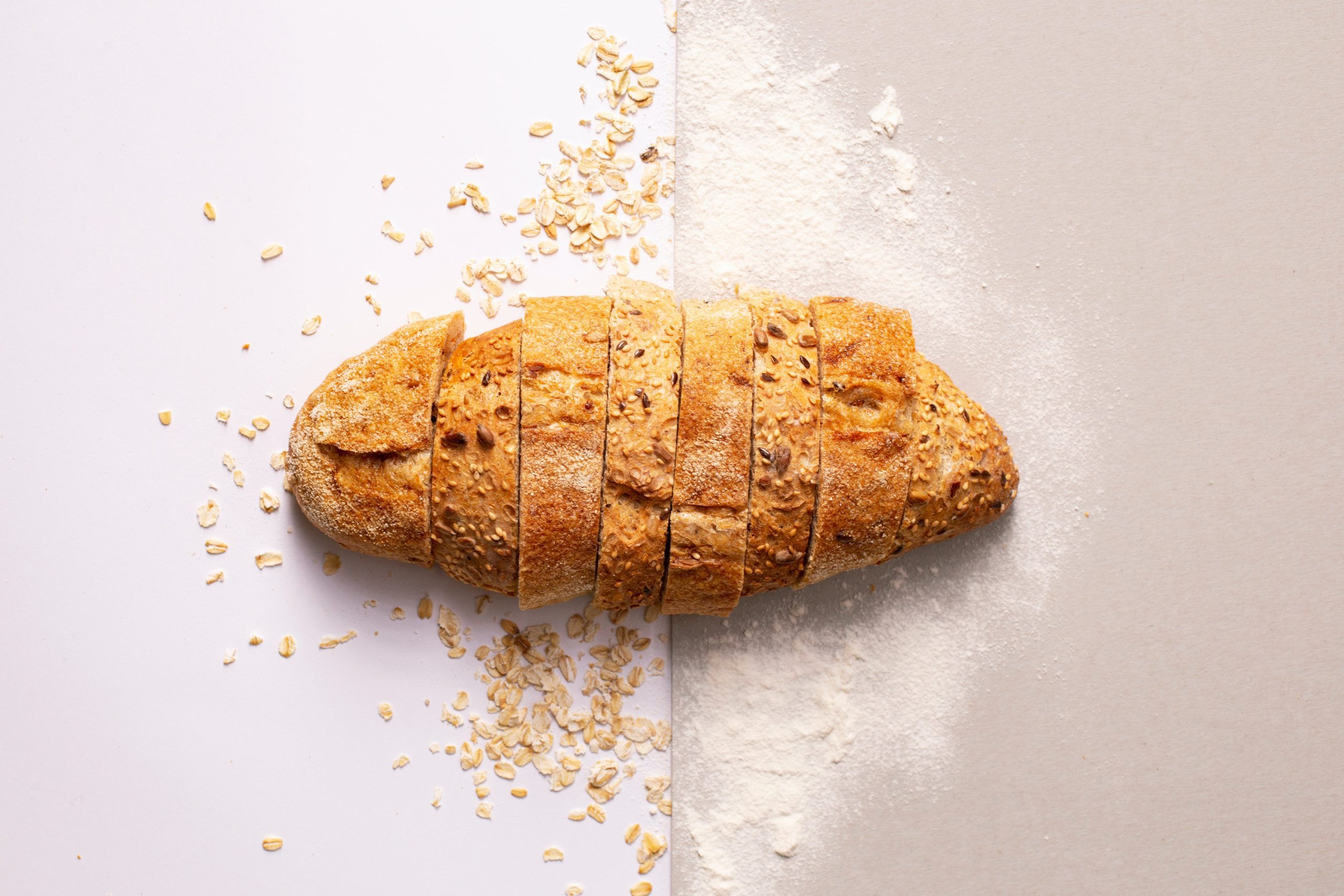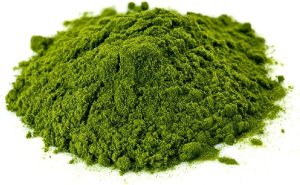
- Overview of Inulin
- Brief History of Inulin
- Functions of Inulin
- Recommended Daily Intake (RDI), Recommended Dietary Allowance (RDA), Adequate Intake (AI), or Reference Nutrient Intake (RNI) for Inulin
- Deficiency of Inulin
- Food Sources of Inulin and Where to Get It From
- Inulin and Its Interaction with Other Medications
- Websites and Articles to Delve into the Benefits of Inulin
- Disclaimer
Overview of Inulin
Inulin is a naturally occurring polysaccharide belonging to the fructan group, found in various plants such as chicory roots, Jerusalem artichokes, and dandelions. Comprising repeating fructose units linked by glycosidic bonds, inulin is indigestible by human enzymes, reaching the colon intact where it serves as a prebiotic, promoting the growth of beneficial gut bacteria.
Widely used in the food industry as a soluble dietary fiber and sugar substitute due to its sweetening properties without impacting blood sugar levels, inulin also enhances the texture and mouthfeel of products. Beyond its applications in food, inulin has gained attention for its potential health benefits, including improved gut health, enhanced mineral absorption, and potential support for weight management.
As a versatile compound, inulin continues to be a subject of research for its various applications in nutrition and health.
Brief History of Inulin
Inulin’s history dates back to the early 19th century when it was first discovered in the roots of the elecampane plant by scientists who were exploring natural compounds. However, it was not until the 20th century that researchers began to extensively study and understand the properties of inulin. In the 1930s, scientists identified inulin in the roots of chicory, a common plant in Europe, and recognized its potential as a commercial source.
Throughout the mid-20th century, the extraction and production processes of inulin were refined, and its applications expanded beyond traditional medicinal uses to include food and industrial applications. The 21st century witnessed a surge in inulin’s popularity as a functional food ingredient, particularly as a prebiotic promoting gut health. As research continues to unveil its health benefits and versatility, inulin remains a prominent player in the fields of nutrition, food science, and pharmaceuticals.
Below we present a brief history of inulin presented in a tabular format:
| Year | Milestone |
|---|---|
| Early 19th c. | Inulin discovered in elecampane plant. |
| 1930s | Inulin identified in chicory roots. |
| Mid-20th c. | Refinement of inulin extraction and production processes. |
| 21st c. | Surge in popularity; recognized as a prebiotic. |
| Present | Continues to play a key role in nutrition and food science. |
Functions of Inulin
Inulin serves various functions, making it a versatile compound with applications in food, health, and industrial sectors. Here are some of its key functions:
- Prebiotic Properties:
- Inulin acts as a prebiotic, promoting the growth and activity of beneficial bacteria in the gut, such as bifidobacteria. This helps support a healthy digestive system.
- Dietary Fiber:
- As a soluble dietary fiber, inulin adds bulk to the diet, aiding in digestion and contributing to feelings of satiety. It can be used to enhance the fiber content of food products.
- Sugar Replacement:
- Inulin has sweetening properties without affecting blood sugar levels, making it a suitable sugar substitute in various food and beverage products for individuals with diabetes or those looking to reduce their sugar intake.
- Texture and Mouthfeel:
- Inulin contributes to the texture and mouthfeel of food products, providing a creamy and smooth consistency. It is often used in the formulation of dairy alternatives, baked goods, and sauces.
- Fat Replacement:
- Inulin can be used as a fat replacement in certain food products, contributing to reduced calorie content while maintaining desired textures.
- Health Benefits:
- Research suggests that inulin may have health benefits, including improved mineral absorption (e.g., calcium), potential weight management support, and positive effects on metabolic health.
- Flavor Enhancer:
- Inulin can enhance the flavor profile of certain foods and beverages, providing a mild sweetness and masking undesirable tastes.
- Stabilizer and Thickener:
- Inulin’s ability to form gels and stabilize emulsions makes it useful as a thickening and stabilizing agent in various food products, such as dressings, sauces, and desserts.
- Functional Ingredient:
- Inulin is used as a functional ingredient in the formulation of functional foods and dietary supplements due to its health-promoting properties.
- Industrial Applications:
- Beyond the food industry, inulin is utilized in various industrial applications, including the production of biofuels and as a base material for biodegradable plastics.
These diverse functions make inulin a valuable and multifaceted ingredient in the realms of nutrition, food technology, and beyond.
Recommended Daily Intake (RDI), Recommended Dietary Allowance (RDA), Adequate Intake (AI), or Reference Nutrient Intake (RNI) for Inulin
Recommended Dietary Allowance (RDA), Adequate Intake (AI), or Reference Nutrient Intake (RNI) for inulin have not been uniformly established. Inulin is a type of dietary fiber, and recommendations for dietary fiber intake are usually provided.
As per the Dietary Guidelines for Americans, the recommended daily intake of dietary fiber varies by age and sex. The general recommendations are:
- Adult Men (19-50 years): 38 grams per day
- Adult Women (19-50 years): 25 grams per day
These recommendations may change over time as new research continues to emerge. It’s essential to consult the latest dietary guidelines or a healthcare professional for the most up-to-date information on recommended nutrient intakes, including fiber, and any specific recommendations for inulin if they become available.
Deficiency of Inulin
Inulin is not considered an essential nutrient, and a deficiency in inulin itself is not recognized. However, a lack of dietary fiber, of which inulin is one type, can lead to various health issues associated with inadequate fiber intake. Insufficient fiber intake may contribute to problems such as constipation, digestive irregularities, and potential disruptions in gut microbiota composition.
Inulin, as a prebiotic fiber, plays a role in supporting the growth of beneficial gut bacteria, which can have positive effects on digestive health. Therefore, a diet consistently low in inulin-rich foods may indirectly impact the balance of gut microbiota and overall gut health.
To avoid deficiencies in dietary fiber, including inulin, it is recommended to consume a well-rounded and diverse diet that includes a variety of fruits, vegetables, whole grains, and other fiber-rich foods. This helps ensure an adequate intake of different types of dietary fiber, contributing to overall digestive health and well-being.
Food Sources of Inulin and Where to Get It From
Inulin is naturally present in various plant foods. Here are some common food sources rich in inulin:
- Chicory Roots:
- Chicory roots are one of the richest sources of inulin. Chicory root can be roasted and ground to make a coffee substitute, and it is also used as a source of inulin in processed foods.
- Jerusalem Artichokes:
- Also known as sunchokes, Jerusalem artichokes contain a significant amount of inulin. They can be roasted, sautéed, or consumed raw in salads.
- Dandelion Roots:
- Dandelion roots, commonly considered weeds, are another source of inulin. They can be dried and used to make tea or roasted for a coffee substitute.
- Asparagus:
- Asparagus contains inulin and is a nutritious vegetable that can be steamed, roasted, or grilled.
- Onions:
- Onions, particularly raw onions, are a good source of inulin. They can be used in salads, sandwiches, and various cooked dishes.
- Garlic:
- Like onions, garlic contains inulin and is often used as a flavorful addition to various dishes.
- Leeks:
- Leeks are part of the Allium family, similar to onions and garlic, and they contain inulin. They can be used in soups, stews, or as a side dish.
- Bananas:
- Unripe bananas contain a type of resistant starch that acts similarly to inulin, promoting gut health.
- Wheat Bran:
- Wheat bran, a component of whole grains, contains inulin. It can be added to cereals, smoothies, or used in baking.
- Barley:
- Barley is a whole grain that contains some inulin. It can be used in soups, stews, or as a side dish.
Including a variety of these foods in your diet can help ensure a diverse intake of inulin and other dietary fibers, promoting overall digestive health. Keep in mind that the amount of inulin in foods can vary, and cooking methods may affect its content. Additionally, inulin is often used as an ingredient in certain processed foods and supplements to boost their fiber content.
Inulin and Its Interaction with Other Medications
Inulin, as a dietary fiber and prebiotic, generally doesn’t interact significantly with medications. It is not absorbed in the small intestine and reaches the colon intact, where it serves as a substrate for beneficial gut bacteria. However, there are a few considerations to keep in mind:
- Medication Absorption:
- Some medications may be affected by the presence of dietary fibers like inulin. If taken concurrently, there is a possibility that the absorption of certain drugs could be altered. It’s advisable to take medications separately from high-fiber meals or supplements.
- Gastrointestinal Effects:
- Inulin, being a fermentable fiber, can cause increased gas production and bloating in some individuals. If you are taking medications for gastrointestinal issues or conditions, the additional fiber intake might affect your symptoms.
- Blood Sugar Levels:
- While inulin itself doesn’t raise blood sugar levels, individuals with diabetes who are using medications to control their blood sugar may need to monitor their levels closely when incorporating significant amounts of inulin-rich foods or supplements into their diet.
- Interactions with Specific Medications:
- There may be specific medications or conditions for which individualized considerations are necessary. Always consult with a healthcare professional or pharmacist if you have concerns about potential interactions.
It’s essential to inform your healthcare provider about all the supplements and dietary changes, including the inclusion of inulin-rich foods or supplements, to ensure a comprehensive understanding of your overall health and to minimize the risk of potential interactions. As with any dietary modification or supplement use, individual responses can vary, so personalized advice is crucial.
Websites and Articles to Delve into the Benefits of Inulin
Disclaimer
The information is solely provided for educational purposes. It is not intended to diagnose, treat, cure, or prevent any disease. Seek the advice of your physician or qualified healthcare provider with any questions you may have regarding a medical condition at all times. Never disregard professional medical advice because of something you have read or learned from this article.






